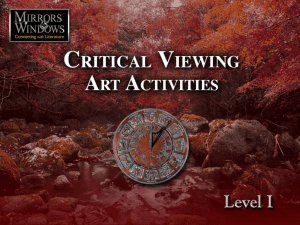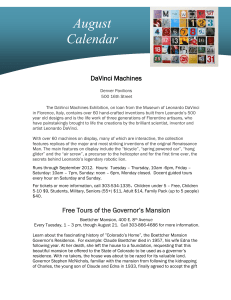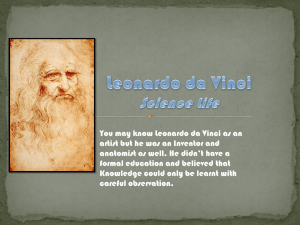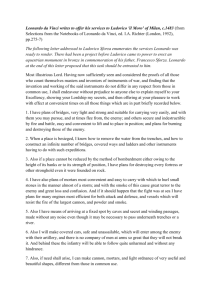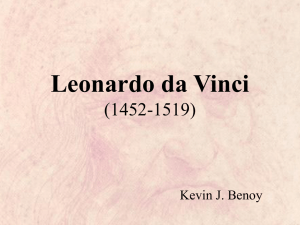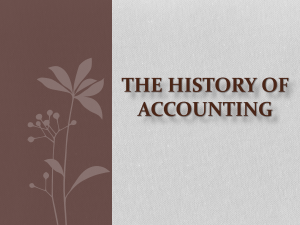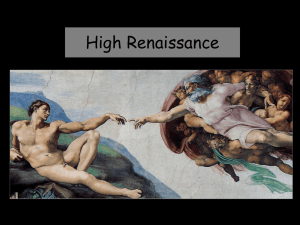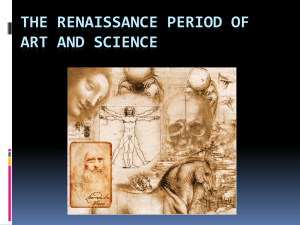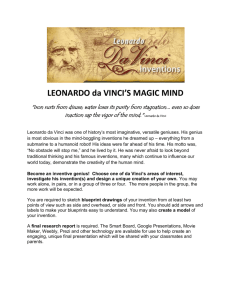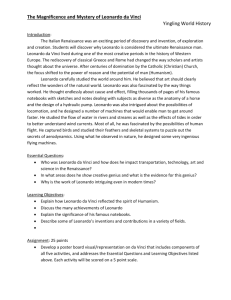Document
advertisement
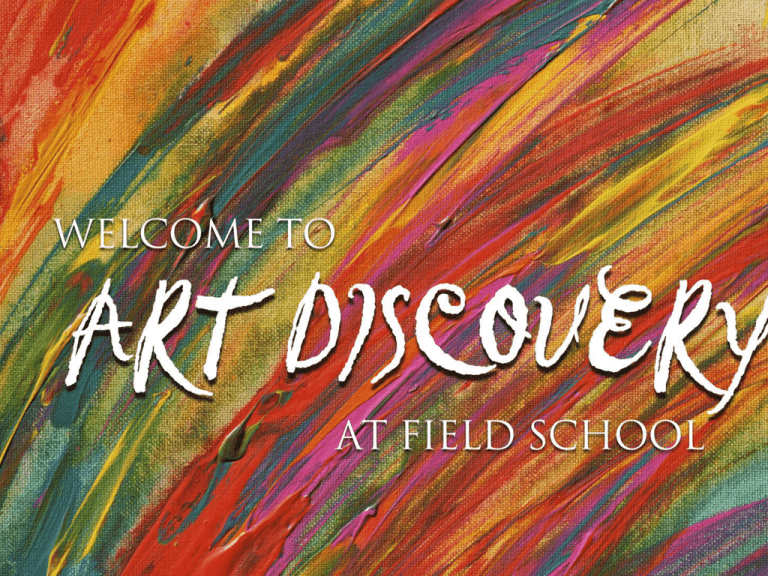
Leonardo DaVinci Painter, sculptor, architect, musician, scientist, mathematician, engineer, inventor, anatomist, geologist, cartographer, botanist and writer (1452 – 1519) Leonardo di ser Piero da Vinci • Born April 15, 1452 in Vinci (Florence, Italy) • His name means Leonardo, son of Piero, from Vinci • He is the best example of a Renaissance Man – someone who was very good at many things • He is considered one of the greatest painters of all time and the most diversely talented person ever to have lived Annunciation (1475-1480) • Informal education included latin, geometry and mathematics, he was not a stand out student • Apprenticed to a renowned Painter, he was so good, his teacher stopped painting because he couldn’t compare The Last Supper, (1490) Leonardo’s “The Last Supper” was declared a masterpiece immediately, but it deteriorated quickly, so that within 100 years, it was almost completely ruined. Leonardo chose a kind of paint that flaked off and grew mold, rather than painting a fresco as others of his day were doing. Only about 15 of his paintings survive today, mostly because he painted with experimental techniques, which ended up peeling, flaking and fading from the canvas. But Leonardo also kept notebooks, drawing in them every day, and his drawings survive where his paintings do not. John the Baptist (1514) The model is daVinci’s student Salai DaVinci’s notebooks are packed with over 13,000 pages of detailed drawings and notes on an enormous range of interests, like designs for wings and shoes for walking on water. He drew faces, emotions, animals, plants, dissected cadavers, war machines, helicopters and architecture. DaVinci was left handed, and all of his writing in the notebooks is written backwards–in cursive–so that it reads correctly when seen in a mirror! A page from daVinci’s notebook Many of his inventions were hundreds of years ahead of their time. In 1502, he designed a bridge with a single span of 720 feet for the sultan of Istanbul. 504 years later, in 2006, the Turkish government decided to build the bridge according to Leonardo’s plan! • While Italy was at war with France in 1502, he created a map for Cesare Borgia, the son of Pope Alexander VI. Maps were exremely rare at this time–a new concept and big military advantage. Cesare hired Leonardo to be his chief military engineer and architect Leonardo started the most famous painting in the world, the Mona Lisa or “la Gioconda” (the laughing one) in 1503. Its fame rests mostly in her strange smile. The artist’s subtle shadowing at the corners of her mouth and eyes – which came be known as “sfumato” or Leonardo’s smoke – was evidence of his incredible talent in showing human expression. All who saw it were awestruck. One of the few of his paintings to survive, it lives at the Louvre, Paris. The Mona Lisa (1503-05) In 1515, King Francis I of France captured Milan, Italy and Leonardo entered the king’s service. King Francis became a close friend, and legend has it that the king cradled Leonardo’s head in his arms as Leonardo died on May 12, 1519 at Clos Lucé, France. Statue of Leonardo outside the Uffizi in Florence Self portrait Clos Lucé (leonardo’s final residence) “In the normal course of events many men and women are born with remarkable talents; but occasionally, in a way that transcends nature, a single person is marvellously endowed by Heaven with beauty, grace and talent in such abundance that he leaves other men far behind, all his actions seem inspired and indeed everything he does clearly comes from God rather than from human skill. Everyone acknowledged that this was true of Leonardo da Vinci, an artist of outstanding physical beauty, who displayed infinite grace in everything that he did and who cultivated his genius so brilliantly that all problems he studied he solved with ease.” — Art Historian Giorgio Vasari, 1568

